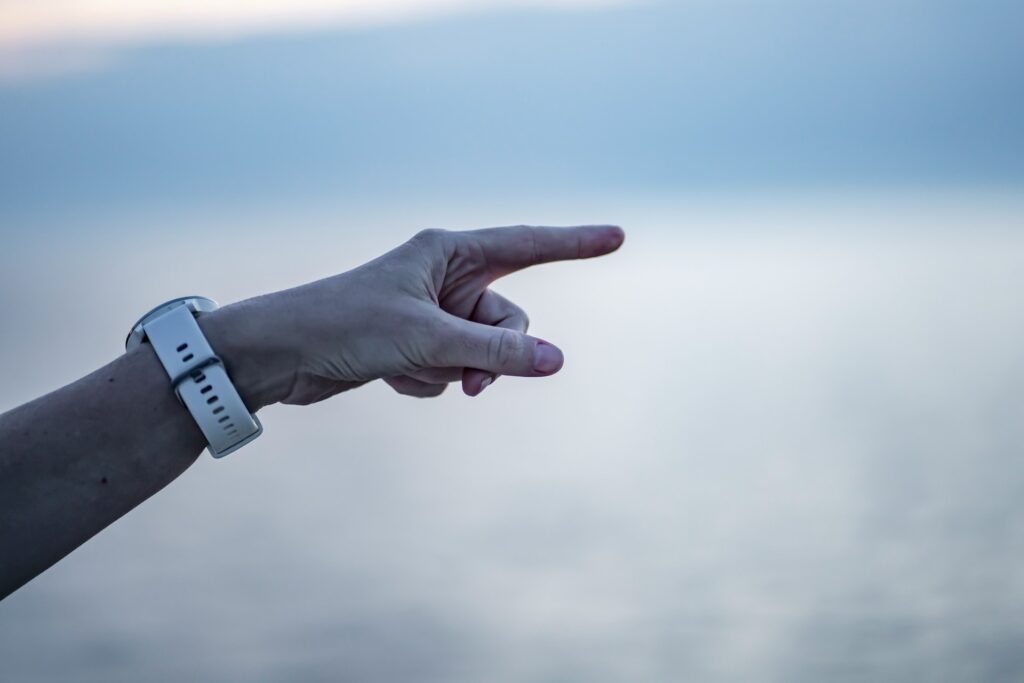Have you ever walked into a room, locked eyes with someone, and instantly felt a connection—or discomfort? That’s the power of eye contact and body language. While words are essential, they often carry less weight than the silent messages our bodies convey. Whether you’re giving a presentation, going on a date, or negotiating a business deal, non-verbal communication is your secret weapon. Let’s dig deep into how body language and eye contact shape our interactions—and how to harness them for success.
Introduction to Non-Verbal Communication

What is Non-Verbal Communication?
Non-verbal communication refers to the transmission of messages without using spoken words. It encompasses facial expressions, body posture, gestures, eye movement, touch, and even the use of space (proxemics). It’s often said that over 70% of communication is non-verbal—and while the exact number is debated, the truth remains: how you say something often matters more than what you say.
Think about it: a nod, a smile, or crossed arms can communicate approval, warmth, or resistance far more powerfully than any sentence. Unlike verbal language, which is conscious and deliberate, non-verbal cues are usually subconscious, making them more truthful indicators of a person’s feelings or intentions.
Understanding non-verbal communication isn’t just about reading others; it’s also about managing your own signals to be more effective, authentic, and persuasive. From boardrooms to bedrooms, non-verbal cues set the tone of relationships, influence first impressions, and impact your perceived credibility.
Importance in Human Interaction
Non-verbal communication bridges gaps when words fall short. In tense situations, a simple touch on the shoulder can offer more comfort than a thousand reassurances. In job interviews, how confidently you sit and maintain eye contact can be more persuasive than your resume.
Non-verbal signals provide context to verbal messages. A sarcastic remark isn’t just defined by tone but also by a smirk or a roll of the eyes. These silent cues often help decode emotions, intentions, and reactions faster than verbal explanations.
In short, mastering non-verbal communication allows for deeper connections, better conflict resolution, and enhanced leadership. And in today’s hyper-connected world, where digital communication is rising, those who can still excel face-to-face hold a serious advantage.
The Role of Eye Contact in Communication

Establishing Trust and Connection
Eye contact is a powerful tool in human interaction. It signals confidence, sincerity, and attentiveness. When you maintain steady eye contact during a conversation, it shows you’re engaged and respectful, building instant rapport.
In fact, studies show that people who maintain consistent eye contact are perceived as more intelligent, trustworthy, and likable. It fosters an emotional connection—essential in both personal and professional relationships. Whether you’re closing a business deal or having a heart-to-heart, eye contact creates a sense of intimacy and honesty that words alone cannot.
But balance is key. Too little eye contact might make you seem distracted or dishonest. Too much can come off as aggressive or invasive. Ideally, aim to hold eye contact for about 50-60% of a conversation. Use it to emphasize points, show empathy, and reinforce your presence without dominating the interaction.
Cultural Differences in Eye Contact
Not all cultures interpret eye contact the same way. In Western societies like the U.S., Canada, and much of Europe, direct eye contact is a sign of confidence and respect. However, in many Asian, African, and Latin American cultures, prolonged eye contact can be considered disrespectful or confrontational—especially between social hierarchies.
For instance, in Japan, people often avoid prolonged eye contact as a sign of politeness, especially with elders or superiors. In Middle Eastern cultures, intense eye contact can be a sign of sincerity or dominance depending on the context.
Understanding these nuances is crucial, especially in global or multicultural settings. Misinterpreting eye contact can lead to confusion, discomfort, or even offense. By educating yourself on cultural expectations, you demonstrate emotional intelligence and adaptability—two key traits of effective communicators.
When Eye Contact Can Be Misinterpreted
Sometimes, even well-intentioned eye contact can send the wrong message. Intense or prolonged stares can be perceived as threatening or invasive. Conversely, avoiding eye contact may be seen as deceitful or socially anxious, even if you’re simply shy or thoughtful.
In romantic contexts, lingering eye contact can ignite attraction—but when misaligned, it can also lead to awkward misunderstandings. In high-pressure situations, like police interrogations or job interviews, the lack of eye contact might be unfairly interpreted as dishonesty.
That’s why it’s essential to read the room. Eye contact should be adapted to the situation, your relationship with the person, and the emotions being conveyed. Watch for body language cues—does the other person seem relaxed or uneasy? Do they mirror your gaze or look away? Let these signs guide your approach.
Understanding Body Language

Types of Body Language Signals
Body language is a rich tapestry of non-verbal cues that includes everything from a head tilt to the position of your feet. It’s the silent symphony playing alongside our spoken words—and it often reveals more than we intend. There are five main types of body language signals: facial expressions, gestures, posture, movement, and touch.
Facial expressions are universal; a smile usually denotes happiness, while a frown suggests displeasure. But gestures like hand signals can vary widely by culture. Posture tells others how confident or engaged you feel—think about the difference between someone standing tall versus slouching. Movement, including the way you walk or shift your weight, can reveal nervousness or decisiveness. And finally, touch—like a handshake or a pat on the back—can communicate encouragement or dominance.
Understanding these signals allows you to “read” people like a book. Are they relaxed and open? Are they defensive or nervous? By picking up on these silent clues, you can tailor your approach, resolve tension, or build trust quickly.
The Role of Gestures, Posture, and Facial Expressions
Gestures amplify our words. Think of a politician emphasizing a promise with an open hand or a coach signaling encouragement with a fist pump. These movements underscore intention and energy. But they must be natural—overusing hand gestures can seem rehearsed or theatrical, diluting their power.
Posture is another critical player. A straight, open stance conveys confidence and approachability. Conversely, crossed arms, hunched shoulders, or turned-away feet can indicate discomfort or defensiveness. In business meetings or interviews, how you carry yourself may be just as important as what you say.
Facial expressions—those subtle movements of the eyes, eyebrows, mouth, and forehead—are often the most telling. A smirk can reveal sarcasm, while raised eyebrows may signal curiosity or surprise. Even a slight lip twitch can betray hidden emotions. These micro-expressions can change the entire meaning of a conversation, especially when they contradict spoken words.
In short, mastering these aspects of body language makes you not only a better communicator but also a more empathetic one. You’ll be able to sense what others aren’t saying—and respond accordingly.
Microexpressions and What They Reveal
Microexpressions are brief, involuntary facial expressions that occur within a fraction of a second. They flash across the face when someone is trying to conceal their true emotions—making them incredibly insightful.
For example, a person might smile politely while their eyes briefly flash with contempt or fear. These microexpressions often reveal the truth behind a facade, which is why they’re studied in psychology, law enforcement, and even negotiation training. There are seven universally recognized microexpressions: happiness, sadness, anger, fear, disgust, surprise, and contempt.
Reading microexpressions is not about being manipulative; it’s about being emotionally intelligent. If you notice someone’s fleeting expression of discomfort during a pitch or proposal, you can quickly pivot, clarify, or reassure. Recognizing these subtle cues can help diffuse conflict, close deals, or deepen relationships.
The challenge is that microexpressions happen fast—really fast. It takes practice, focus, and training to spot them consistently. But once mastered, this skill becomes a powerful tool in your communication arsenal.
The Science Behind Eye Contact and Body Language

Psychological and Neurological Impact
The effects of eye contact and body language go beyond surface-level impressions—they actually influence brain chemistry. Making eye contact activates the limbic mirror system in the brain, which fosters empathy and emotional bonding. It’s the same system that helps you feel connected to a character in a movie or to someone in real life when you share a meaningful look.
Eye contact also releases oxytocin, the “love hormone,” which builds trust and connection. This is especially important in team dynamics, therapy sessions, or romantic relationships. On the other hand, avoiding eye contact can trigger suspicion or disengagement in the observer’s brain.
Body language, similarly, has physiological effects. Standing in a power pose (think Wonder Woman stance) for just two minutes can increase testosterone and lower cortisol levels, making you feel more confident and less stressed. That’s why experts recommend striking confident poses before important meetings or presentations.
These findings confirm what many intuitively feel: how we use our bodies and eyes not only influences how others see us—it literally changes how we feel and behave ourselves.
Body Language in Psychological Theories
Many psychological frameworks emphasize the importance of non-verbal cues. In Albert Mehrabian’s communication model, 55% of communication is body language, 38% tone of voice, and only 7% is actual words. Though this model applies mainly to conveying feelings and attitudes, it highlights how much weight body language carries.
In Freudian psychology, suppressed emotions often manifest as physical behaviors—nervous tics, posture shifts, or facial expressions. Meanwhile, Carl Jung emphasized the unconscious signals we send, arguing that our “shadow” selves often speak through our bodies.
Modern behavioral psychology also focuses heavily on non-verbal signals, especially in therapeutic contexts. Cognitive Behavioral Therapy (CBT), for example, encourages awareness of how posture and expression affect mood and behavior, leading to more positive outcomes.
In essence, body language is not just a byproduct of emotions—it’s a vital part of emotional regulation, interpersonal influence, and mental well-being.
Eye Contact and Emotional Intelligence
Emotional intelligence (EQ) is the ability to recognize, understand, and manage your own emotions and those of others. Eye contact and body language play a huge role in this. Someone with high EQ can interpret subtle non-verbal cues, respond appropriately, and navigate complex social interactions with ease.
Think about a leader who notices their team is disengaged—not because anyone said it, but because of slouched shoulders, fidgeting, or lack of eye contact. By tuning in, the leader can shift gears, re-engage the group, or address underlying concerns.
Likewise, maintaining eye contact while someone is speaking shows empathy and presence. Breaking eye contact too soon might suggest disinterest, while holding it too long could feel confrontational. Striking the right balance is key—and it comes naturally to those with high emotional intelligence.
Improving your EQ involves not just understanding your own body language, but also learning how to adjust it to connect better with others. It’s a lifelong skill that enriches relationships, boosts careers, and enhances overall quality of life.
Eye Contact and Body Language in Different Contexts

Professional Settings
In the workplace, body language and eye contact can be game-changers. Whether you’re in a boardroom, at a networking event, or leading a team, your non-verbal communication often speaks louder than your actual words. For instance, confident eye contact signals credibility during presentations, while open body posture projects leadership and approachability.
During interviews, recruiters often make judgments within seconds—many based on body language. Sitting up straight, making purposeful gestures, and maintaining appropriate eye contact can convey confidence, honesty, and preparedness. On the flip side, slouching, fidgeting, or avoiding eye contact may signal nervousness, lack of interest, or dishonesty.
In leadership roles, your body language sets the tone for your team. Leaders who appear relaxed and confident through posture, steady eye contact, and warm facial expressions create an atmosphere of trust and openness. This encourages collaboration and boosts morale. Meanwhile, crossed arms or a lack of engagement might create distance or fear.
Moreover, non-verbal cues matter in digital communication too. In video meetings, maintaining eye contact with the camera, nodding in agreement, and keeping a positive facial expression can replicate the effectiveness of in-person communication. Professionals who master these skills often stand out and move ahead.
Romantic and Social Interactions
Eye contact and body language are the cornerstones of attraction and connection in romantic settings. A shared glance across the room or a subtle smile can speak volumes without a single word. In fact, mutual eye contact often triggers feelings of excitement and intimacy, creating what psychologists call the “eye contact effect.”
In early stages of dating, people rely heavily on non-verbal cues to assess compatibility. Open gestures, leaning in slightly, and mirroring each other’s movements are all signs of interest and emotional alignment. When someone mirrors your body language, it’s a subconscious signal that they’re in sync with you.
Touch also plays a big role in social settings. A light touch on the arm can reinforce a joke or show empathy. But context matters—what’s charming on a date could be awkward at a business function. Being attuned to how your gestures are received can make all the difference in creating positive connections.
Even in friendships, non-verbal cues matter. Think about how a friend’s hug, eye roll, or knowing glance can instantly communicate support, humor, or concern. Strengthening these silent signals enhances the depth of relationships and makes interactions more meaningful.
Public Speaking and Presentations
Great public speakers don’t just use words—they command attention through powerful body language and purposeful eye contact. Before they even speak, their posture, stance, and facial expression set the stage for credibility and authority.
When speaking to an audience, scanning the room and making eye contact with different sections helps engage listeners and create a sense of dialogue. Holding eye contact with individuals for a few seconds makes the message feel personal, while avoiding eye contact may suggest lack of confidence or disconnection.
Gestures are essential in emphasizing key points. Using your hands to describe size, direction, or emotion adds depth and clarity. But overdoing it—or appearing stiff—can distract from your message. Similarly, pacing the stage with intention adds energy, while aimless movement signals nervousness.
Facial expressions should match the emotion of your message. A warm smile while telling a story, or a serious look while discussing challenges, keeps the audience emotionally connected. Speakers who align their facial cues with their message are seen as authentic and memorable.
Ultimately, mastering body language and eye contact in public speaking not only boosts your delivery—it builds trust, captivates attention, and makes your message resonate long after the words have ended.






